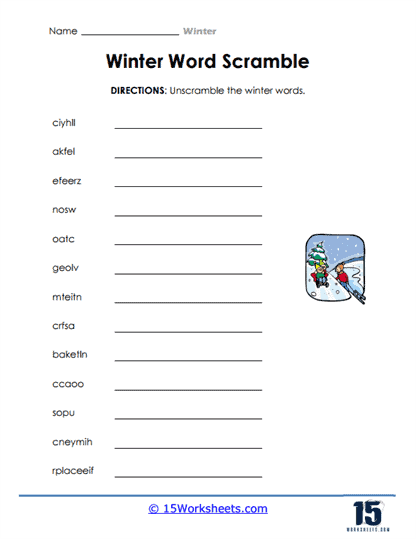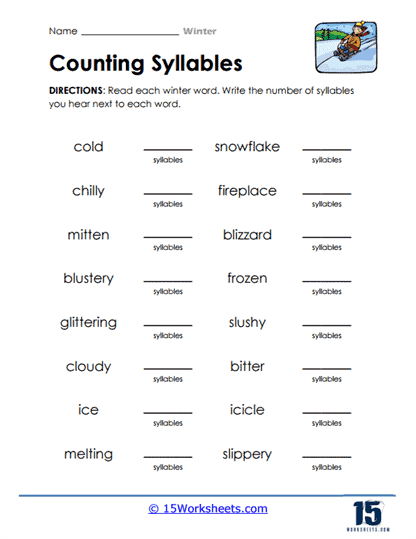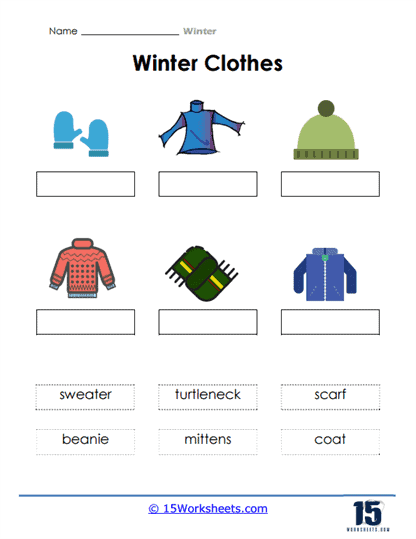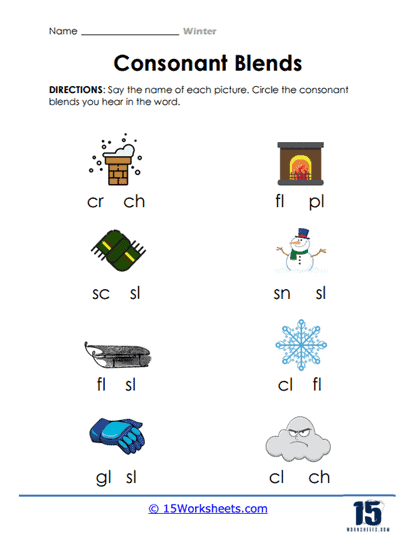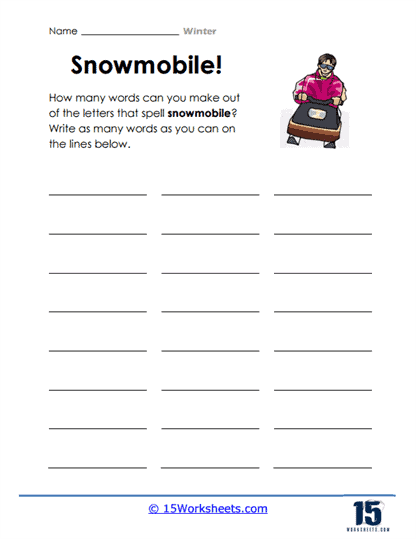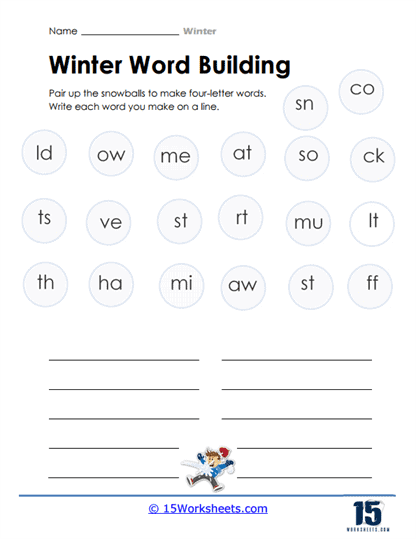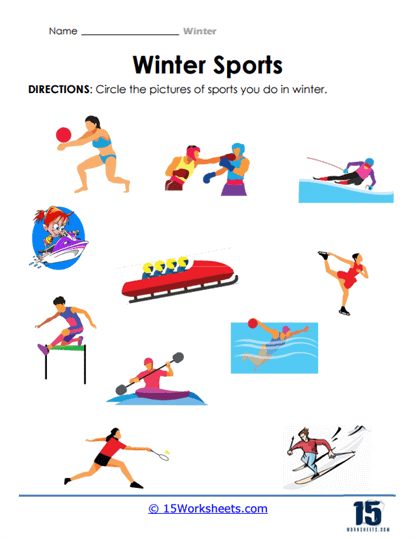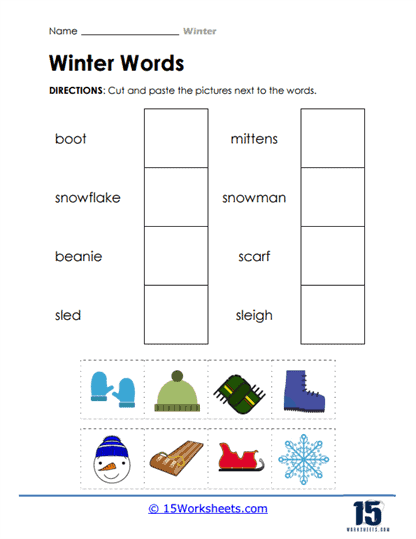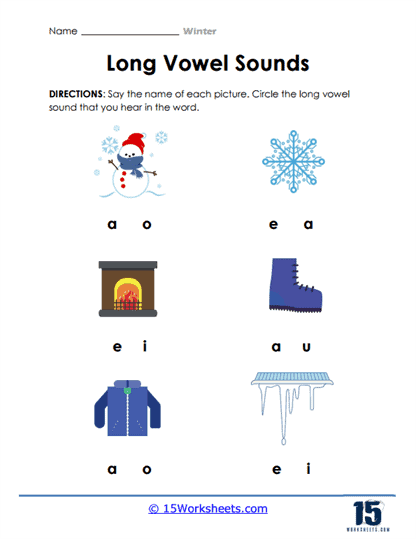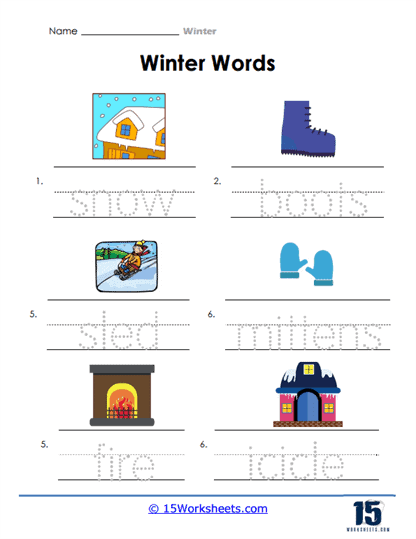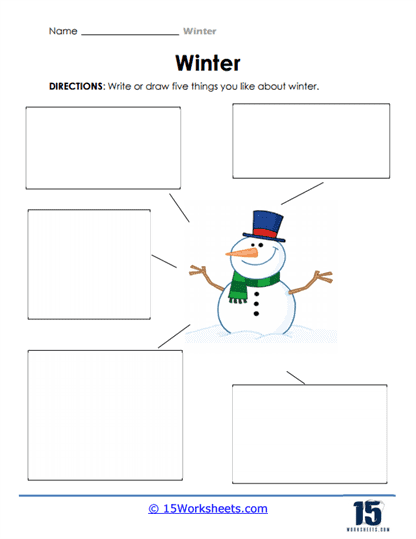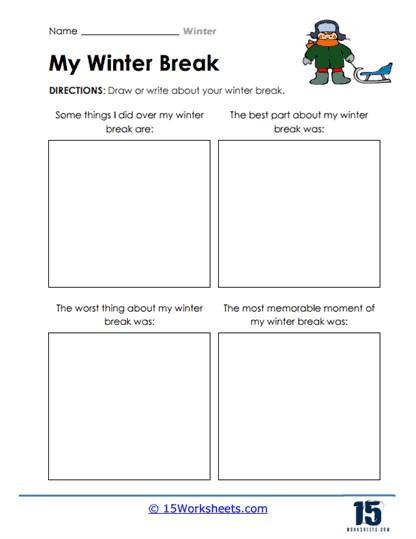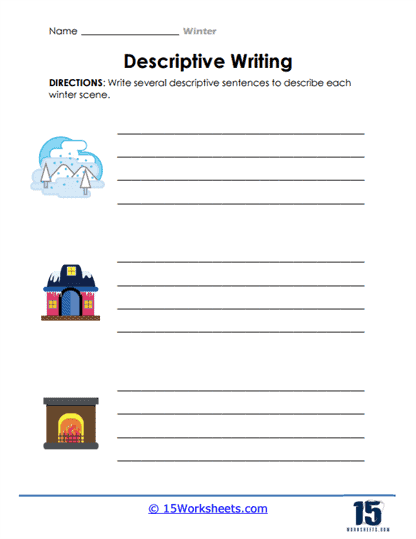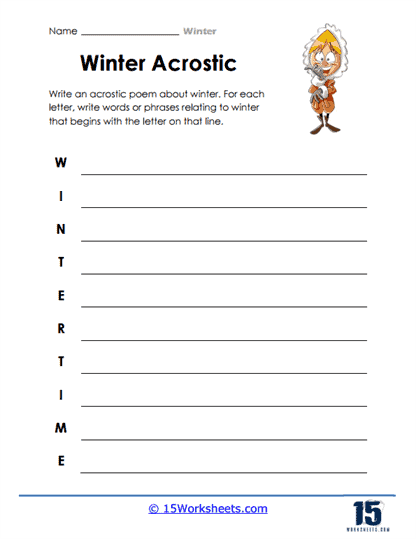Winter Worksheets
All About These 15 Worksheets
This series of 15 worksheets is an engaging and educational resource designed to celebrate and learn about the season of winter while developing basic skills in vocabulary and writing. These worksheets provide students with an opportunity to deepen their understanding of winter, explore its unique characteristics, and engage in various winter-themed activities. By accomplishing a variety of exercises, they will develop knowledge, critical thinking skills, creativity, and an appreciation for the beauty of winter. Through these worksheets, students will:
- Hone their vocabulary through fun and engaging exercises like Unscramble Words, Counting Syllables, Winter Clothes, Consonant Blends, word building, Long Vowel Sounds, cut and paste, and tracing of winter-themed words;
- Share their experiences during winter by describing the activities they like to do during the season;
- Draw or write about their reflections and experiences during winter break, fostering creativity and honing their use of descriptive language;
- And showcase their critical thinking skills and creativity by making an acrostic poem about winter.
This series provides an immersive and educational resource for students to celebrate and learn about the season of winter. Through activities encompassing vocabulary expansion, sports and activities, art and creativity, and reflection, they will deepen their understanding, foster critical thinking, develop observation skills, and express their creativity. In summary, these worksheets promote a sense of wonder, appreciation for the beauty of winter, and inspire students to explore and embrace the unique characteristics of the winter season.
What is the Winter Season?
The winter season is one of the four main seasons experienced in many parts of the world, characterized by cold weather, shorter days, and longer nights. Winter occurs when the Earth’s axis tilts away from the sun, resulting in less sunlight and lower temperatures in the affected hemisphere. The specific dates of the winter season vary depending on the location and the local climate.
In the Northern Hemisphere, winter typically begins around December 21st with the winter solstice, the shortest day and longest night of the year, and ends around March 20th with the vernal equinox, when day and night are approximately equal in length. In the Southern Hemisphere, winter usually begins around June 21st with the winter solstice and ends around September 22nd with the vernal equinox. The severity of winter weather can vary greatly, with some regions experiencing frigid temperatures, heavy snowfall, and ice, while others may have milder conditions with little or no snow.
Winter is often associated with various holidays, customs, and recreational activities, such as Christmas, Hanukkah, Kwanzaa, and New Year’s celebrations, as well as winter sports like skiing, snowboarding, and ice skating. The season can also be a time for rest, reflection, and spending time indoors with family and friends. Despite the cold and darker days, winter can be a beautiful and magical time of year, with snow-covered landscapes, crisp air, and a peaceful atmosphere.
Decorating the Classroom for Winter
Decorating a classroom for winter can create a cozy, inviting atmosphere that celebrates the season while supporting a learning environment. Here are some ideas a teacher can consider:
Winter Wonderland – Create a winter wonderland theme with paper snowflakes hanging from the ceiling, cotton batting for snow, and twinkling white lights to give the effect of a snowy landscape.
Bulletin Boards – Decorate bulletin boards with winter themes, such as snowmen, penguins, and polar bears. Use cool colors like blue, white, and silver. Encourage students to contribute with winter-themed art or poetry.
Cozy Reading Corner – Set up a corner with blankets, pillows, and soft lighting where students can read. You can add winter-themed books to the area to encourage seasonal reading.
Door Decorations – Decorate the classroom door with winter motifs. You can make it look like a snowman, an igloo entrance, or a scene from a popular winter story.
Window Decor – Use washable paint to create frost patterns or winter scenes on the windows. If paint isn’t an option, static cling window decorations can be a non-permanent solution.
Seasonal Learning Stations – Create learning stations that are winter-themed. For example, a science station could include experiments with ice and snow, while a math station could feature winter word problems.
Interactive Winter Wall – Have a wall where students can add what they love about winter or what they’ve learned about the season. This could include facts about winter solstice, how animals adapt, and winter sports.
Warm Colors and Textures – Introduce throw rugs, curtains, and cushions in warm colors to make the room feel warmer. Textures like flannel can add to the cozy winter feel.
Nature Elements – Bring in branches to create bare winter trees, pine cones, and evergreen branches to give a touch of nature to the classroom.
Cultural and Holiday Celebrations – Acknowledge the diversity of winter celebrations by having decorations that reflect the holidays celebrated by students in your class.
Crafts Corner – Set up a space where students can make winter crafts to take home or to decorate the classroom, like paper chain garlands in wintery colors.

